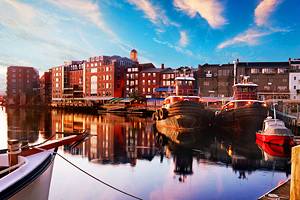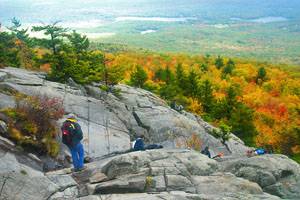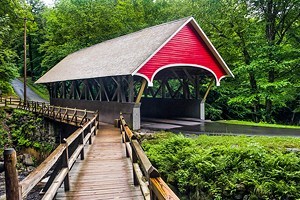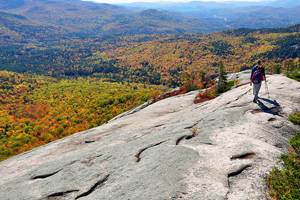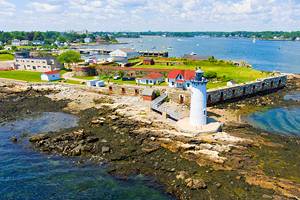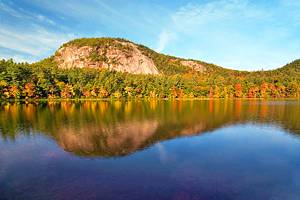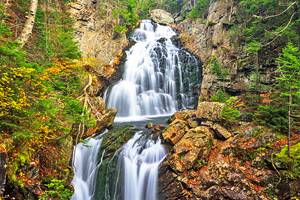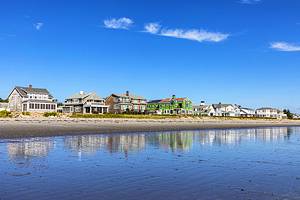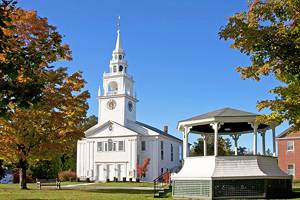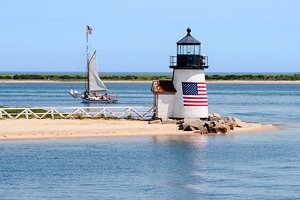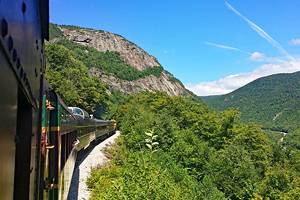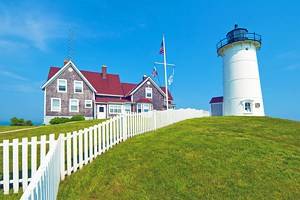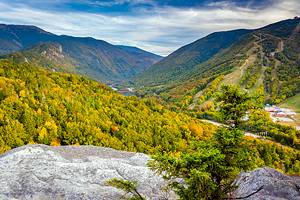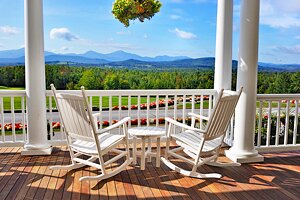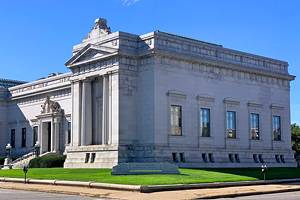9 Best Cities in New Hampshire
Barbara Radcliffe Rogers grew up in Dover, New Hampshire, and now lives in a small town near Keene; she is the author of the guidebook New Hampshire Off the Beaten Path and writes the Our Town column for New Hampshire Magazine.
Often over-shadowed by the state's popular tourist centers of the White Mountains and Lake Winnipesaukee, New Hampshire's cities don't get as much attention. But they are filled with attractions and things to do, making them perfect destinations for relaxing weekend getaways.
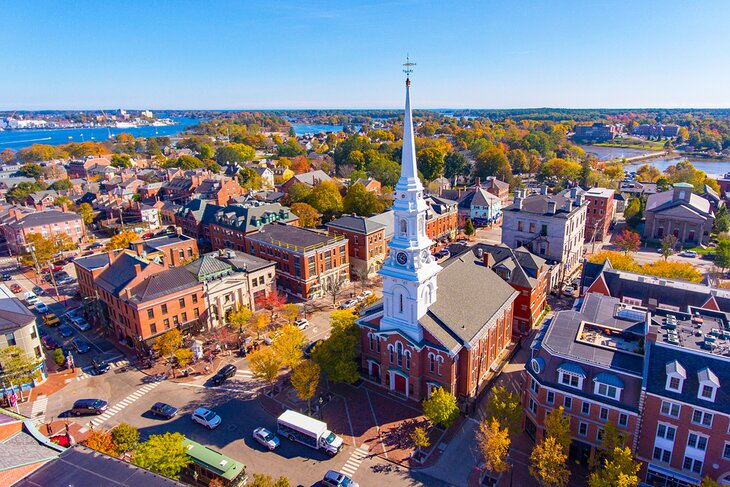
To those from large metropolitan areas, New Hampshire's cities may seem like towns — and in fact, several of them are. Throughout most of New England, the distinction between towns and cities is based on their form of government, not their size or population. So some of the "cities" in this list are technically towns, but you wouldn't know it from their busy Main Street or abundance of things to do there.
Although most people come to New Hampshire for outdoor sports and a relaxing break from urban life, they are often surprised at how many accessible cultural activities they find: concert and performance venues, symphony orchestras, film festivals, live theater, art museums, and galleries.
Choosing a city as a base for a getaway doesn't mean you need to forgo New Hampshire's traditional attractions of idyllic villages and romantic covered bridges, or its outdoor activities such as hiking and kayaking. Each of the cities is surrounded by all of these.
Keene, for example, is a good base for climbing Mt. Monadnock (the most frequently climbed mountain in America) and for a tour of six covered bridges. Laconia sits on the shores of Lake Winnipesaukee and close to one of the top ski resorts in New Hampshire.
You'll find plenty of places to visit and things to do in this list of the top cities in New Hampshire.
1. Portsmouth
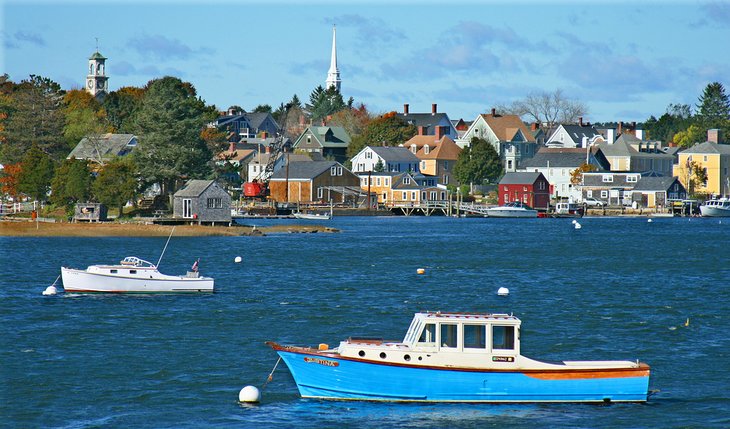
Portsmouth was a major colonial seaport, its importance based both on its deep harbor and its proximity to the seemingly inexhaustible supply of tall, straight pine trees for Royal Navy masts. Many of Portsmouth's attractions today stem from its long and colorful history. Few places have as much of their past so well preserved.
The first place to go is the 10-acre Strawbery Banke Museum, named for the original settlement here in 1623 and one of the top tourist attractions in New Hampshire. Four centuries of the old port neighborhood are represented in its restored and preserved homes and buildings that include a 1770 tavern, homes of prosperous merchants, and a neighborhood market stocked with foods of the World War II era.
You can watch traditional boats being built, and see demonstrations of open hearth and woodstove cooking, see colonial-era herb gardens and a World War II Victory Garden. But historic homes are all over Portsmouth's compact downtown, all within a short walk of Market Square.
Overlooked by the tall steeple of North Church, the square is the meeting point of four streets that make up the heart of downtown Portsmouth. Of prime interest to shoppers is busy Market Street, lined with small specialty shops. Follow it beyond the shops to find the elegant 1763 Moffatt-Ladd House, with its original furniture and beautiful period gardens.
The Portsmouth Harbor Trail connects more historic homes that are open to visitors: The 1716 Warner House, with its colonial wall paintings and Queen Anne furniture; the 1758 John Paul Jones House; the 1785 Governor John Langdon House; and the Rundlet-May House, built in 1807.
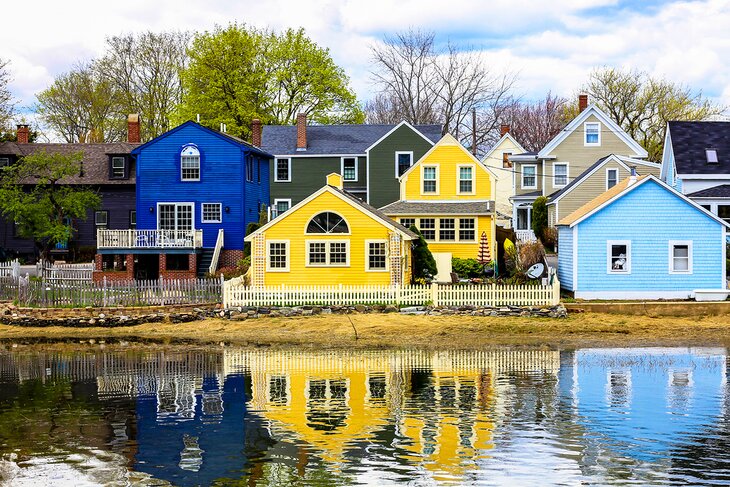
Another route worth following is the Black Heritage Trail, highlighting Black culture of the Colonial and Federal periods. It begins, appropriately, at the docks where slaves were auctioned as they came off the ships.
On a less somber note, stroll through the beautiful gardens of nearby Prescott Park, especially in the spring when the tulips bloom or in summer when the annual displays are at their best. The Prescott Park Arts Festival brings music and theater performances each summer.
There's plenty more to do in Portsmouth for those not as interested in history. Take in a live or simulcast performance at The Music Hall or explore Portsmouth Harbor on a cruise to see lighthouses and Fort Constitution. Or cruise farther out to visit the Isles of Shoals, an island group shared by Maine and New Hampshire.
Don't leave Portsmouth without sampling some of its restaurants — it's known for the state's best dining scene.
2. Concord
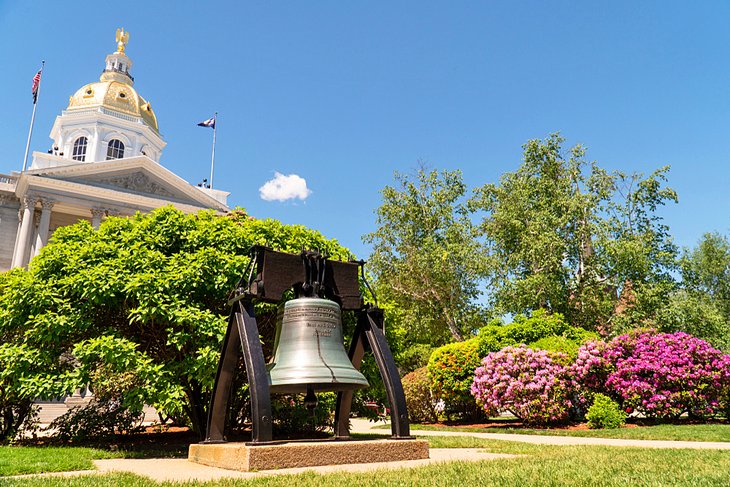
One of the nation's smallest capital cities, Concord seems more concerned with the arts than with politics. Granted, the imposing State House topped by its glistening gold dome overlooks the downtown, but most of the government offices blend in with the elegant brick mercantile buildings that line both sides of Main Street.
What you'll notice strolling through downtown Concord — along with the well-preserved architectural details on the buildings — are the sculptures and other works of art that adorn the sidewalks. Especially outstanding is the ornamental ironwork that frames the entrance to a tiny square opposite the State House. Specialty shops, cafés, restaurants, and boutiques fill the street level, selling everything from the works of local artists and craftspeople to vintage vinyl.
At the far end of the downtown shops is the Capitol Center for the Arts, which features a regular schedule of live performances. Retractable seating of the new Bank of New Hampshire Stage allows the center to host performances in different configurations, from a fixed-seat concert hall to a dance floor.
Check the schedule of the Concord Community Music School, too, for public lunch-hour concerts, professional performances, student recitals, and jazz jam sessions, many of which are free. Also on Main Street is Red River Theatres, a small movie theater featuring first-run independent films, classic and foreign films, along with on-screen art exhibits. Concord's arts scene makes it one of the best places to visit in New Hampshire.
Behind the State House, stop at the New Hampshire Historical Society to see, among other exhibits, an entire gallery of paintings by the White Mountain Artists. Continue into some of the residential streets to find beautifully kept Victorian homes.
Outside the city center is the McAuliffe-Shepard Discovery Center, whose interactive exhibits explore astronomy, aviation, space and earth science; the planetarium shows are designed for all ages and always include one on what to look for in the season's night sky.
Read More: Best Things to Do in Concord
3. Keene
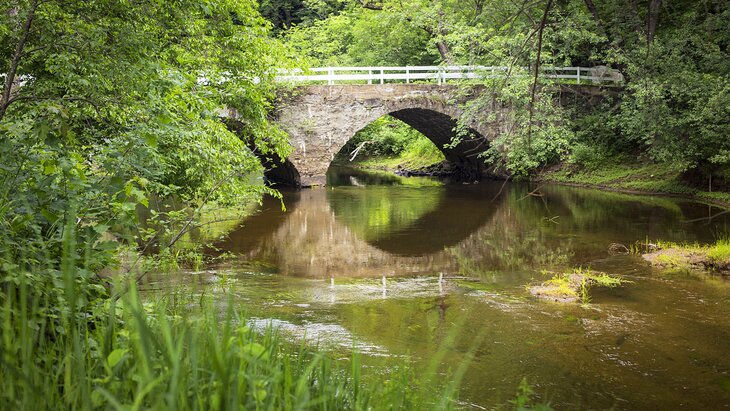
Keene sits in the heart of the Monadnock Region named for the mountain that forms the backdrop to so many southwestern NH views. Surrounding Keene are some of the state's most photo-worthy country villages: Walpole (home of Burdick's Chocolates), Fitzwilliam, Jaffrey Center, Harrisville (stop at Harrisville Designs for dreamy knitting yarns), and Hancock (The Hancock Inn is the state's oldest continuously operating inn).
Unlike most other cities whose early economy was based on mills, Keene's never dominated the central city landscape, leaving its famously wide Main Street and tree-shaded Central Square as the focal point. Elegant brick commercial buildings are well maintained, their street levels occupied by the shops and restaurants (several of which spill into the street in good weather) that give downtown Keene its lively vibe.
Through the center of Keene is an Industrial Heritage Trail, a bike and walking path with signage describing the city's manufacturing history. The trail continues south for several miles, past one of the five covered bridges in neighboring Swanzey. On the sides of buildings along the trail and elsewhere throughout the downtown, you'll see murals depicting significant events and people in local history.
On Main Street, the Horatio Colony House Museum preserves the 1806 Federal home of a well-traveled collector. What makes this museum more fun than the usual old-house museum is the eccentric nature of Colony himself and his quirky collections.
Farther down Main Street, visit the Wyman Tavern, furnished as it was when Minutemen gathered here before marching to the battle of Lexington in 1775. Behind the Tavern is the campus of Keene State College, which enriches the city's already busy calendar of musical events.
Choose Keene as a base for climbing Mt. Monadnock, kayaking the Ashuelot River, touring covered bridges, or enjoying the frequent concerts and films at the restored Colonial Theatre.
4. Manchester
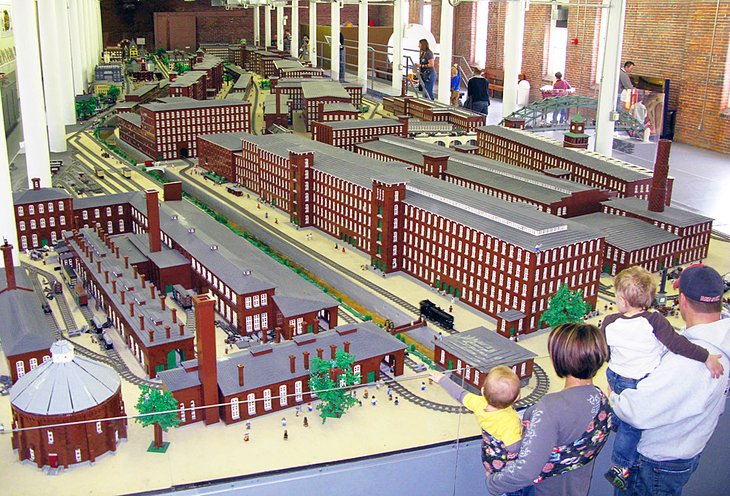
By the time the Merrimack River reaches southern New Hampshire and plummets over Amoskeag Falls in Manchester, the state's largest city, its force is great enough to have powered one of the world's largest mill complexes throughout the Industrial Revolution and half of the 20th century. Those mills still dominate the riverside, converted into offices, restaurants, and museums.
The Millyard Museum brings to life 1,000 years at Manchester's Amoskeag Falls, from Paleolithic Native Americans through the massive mills that churned out millions of yards of fabric and the immigrants who worked the mills. These waves of immigrants would forever shape the city's character. This vibrant cultural diversity shows best today in Manchester's cosmopolitan dining scene, with Nepalese, Brazilian, Franco-Canadian, Hungarian, Greek, and other restaurants.
Manchester has a lively arts scene, home to the Currier Museum of Art and the New Hampshire Symphony Orchestra. Bob Hope and Harry Houdini both "played the Palace" — Manchester's 1915 Palace Theatre, where the program still ranges from grand opera to children's theater.
More than 11,000 works in the Currier's collections include works by Constable, Monet, Corot, and Tiepolo, as well as more modern works of Picasso, Matisse, and O'Keeffe. Prominent here are also works of the White Mountain School of artists, who painted mountain landscapes in the 19th century.
Along with a multitude of recreation facilities — from indoor sky diving to nearby ski areas — the Fisher Cats baseball team plays here. For others, shopping is the major sport, at the numerous tax-free malls and Main Street boutiques.
5. North Conway
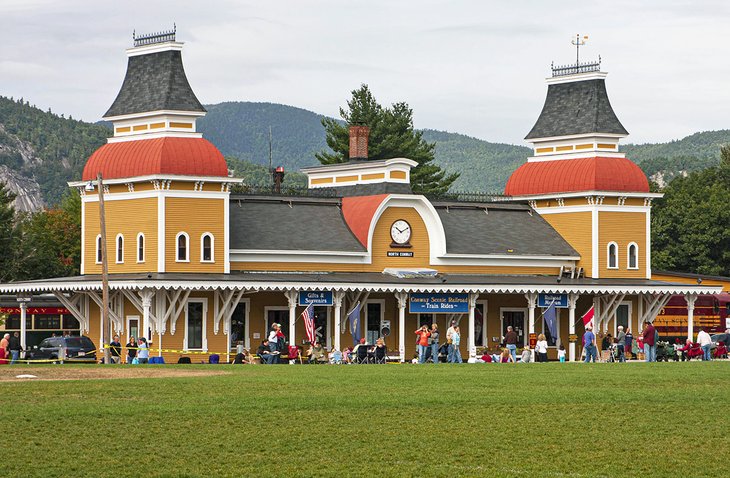
Conway, in the heart of New Hampshire's White Mountains, may seem like two separate towns, but it's actually two "villages" in the same town. Conway, the southernmost, has always been the plain sister of jazzier North Conway, and to further complicate the geography there's also the smaller East Conway, where you can rent kayaks to paddle in the beautiful Saco River.
Although they are all one town, it's North Conway that gets most of the attention. It's a lively ski scene in the winter — it is frequently named New England's #1 ski town — and in the summer, it's the gateway to all the attractions and outdoor activities that have drawn tourists to the White Mountains since the early 19th century. More recently it has become the outlet shopping mecca, even more popular because the state has no sales tax.
Along with the outlets, North Conway's Main Street is lined with locally owned shops and boutiques that make shopping in North Conway one of the top things to do in New Hampshire; don't miss Zeb's General Store for New England specialty foods and the League of NH Craftsmen for fine handmade goods. The focal point of Main Street is the grand Victorian station that's now home to the Conway Scenic Railroad, whose vintage trains take tourists south to Conway or north into the wild landscapes of Crawford Notch.
Overlooking North Conway, Cranmore Mountain was one of New England's first ski resorts and is now a year-round attraction with an Aerial Adventure Park and Mountain Coaster. For more adventuresome visitors, the 700-foot Cathedral Ledge and White Horse Ledge, on the opposite side of the wide valley, are favorites for rock and ice climbers. Watch them from the beach at Echo Lake State Park or take a trail to the top for views of the White Mountains.
Close to Echo Lake, the freshly renovated White Mountain Hotel and Resort has views of Cranmore Mountain from its luxurious rooms; its spacious public areas and grounds capture the feeling of the grand hotels that once dotted the White Mountains.
For a day of ever-changing mountain scenery, follow NH Route 112, the Kancamagus Highway (really a two-lane road), from Conway over the Kancamagus Pass and return to North Conway on a circular route through Franconia Notch and Crawford Notch.
6. Hanover
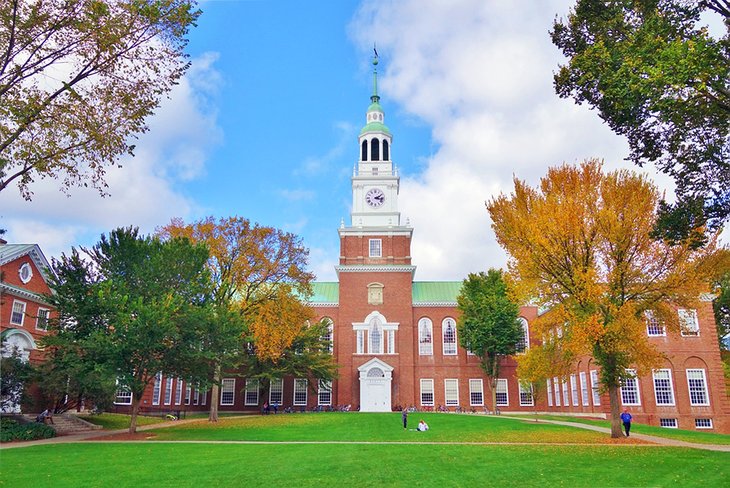
Hanover was a college town from its very beginnings in 1765, when it was granted a charter for that purpose. Dartmouth College has shaped Hanover ever since, with its campus separated from Main Street only by the Dartmouth Green.
You can explore the campus with a map from the college information office on the green to see the fine old homes that now make up the fraternity district, and the powerful floor-to-ceiling murals in the Baker-Berry Library, painted in the 1920s by Jose Clemente Orozco.
Facing the campus is Hopkins Center for the Arts, known as "The Hop," which brings a full schedule of national acts to its 900-seat concert hall, as well as dance and theater in its smaller Moore Theater.
Set back from the street and almost hiding behind the Hopkins Center is the outstanding Hood Museum of Art. This museum, freshly renovated to nearly double its gallery space, is reason enough for a stay in Hanover. The collections total more than 65,000 works, with particular strengths in 19th-century American landscapes and African and Native American art. Six monumental Assyrian stone reliefs date to 900 BCE.
Dartmouth is known for its outdoor sports, so there are plenty of opportunities in Hanover. In the winter there is a skating rink and cross-country center with rentals, and the college's own downhill ski area in nearby Lyme is open to the public.
In the summer, you can rent canoes, kayaks, and stand up paddleboards at the Ledyard Canoe Club, just down the hill from the campus. And if hiking is your passion, the famed Appalachian Trail crosses the Connecticut River in Hanover.
In the fall, you might catch an Ivy League football game, or for a taste of the Ivy League life, you can stay at the poshly understated Hanover Inn, where front-facing rooms overlook Dartmouth Green.
7. Laconia
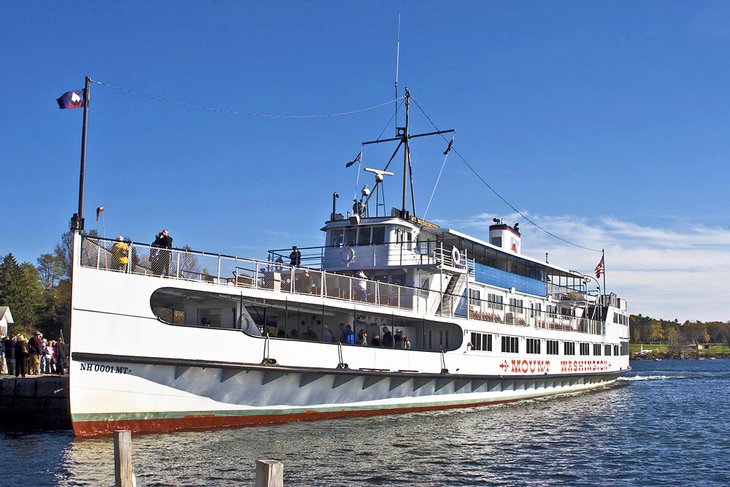
New Hampshire's only city on a lake, Laconia sits at a prime spot on Lake Winnipesaukee's western shore. The neighborhood known as Weirs Beach is a hive of summer activity, with a boardwalk; amusements; and one of the state's top beaches, the 450-foot sand beach at Endicott Rock Park.
Weirs Beach is the place to board any of the three cruise options for scenic tours around the immense lake: the M/S Mount Washington; US Mailboat M/V Sophie C.; or the new Winnipesaukee Spirit, launched in 2021. You can also board here for train rides on the Winnipesaukee Scenic Railroad.
Laconia's downtown lies along the Winnipesaukee River, which powered Belknap Mill, New England's earliest hosiery factory, built in 1823. The Hosiery Museum inside shows the operation of the mill demonstrating the still-working historic machines; in the gift shop, you can buy socks made there. The Power House explores this transition from water power to electricity with working models that show how water wheels and turbines work.
Weirs Beach isn't Laconia's only tourist attraction. South of town, in neighboring Gilford, Gunstock Mountain is a year-round outdoor sports center. When snow falls, the mountain is one of New Hampshire's top ski resorts, with 55 trails and 90 percent snowmaking coverage. The rest of the year, it's an adventure park with 1.6 miles of ziplines, treetop tours, a mountain coaster, scenic lift rides, and hiking trails.
8. Dover
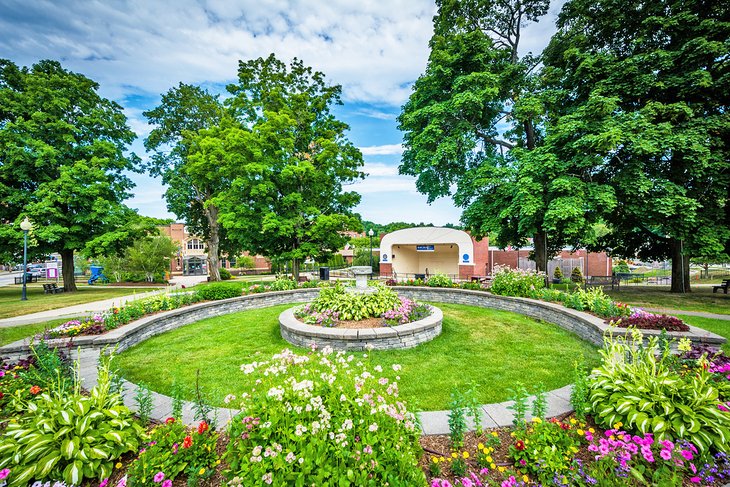
New Hampshire's earliest permanent settlement, Dover was a shipbuilding center, with the Cocheco River navigable from Great Bay as far as the falls. The roaring falls in the center of the city made Dover a prime setting for mills, and as early as 1814 they were harnessed by the Cocheco Manufacuring Co., which grew to become one of New England's largest mill complexes. Although some of the buildings are no longer there, those that remain still dominate the downtown.
An excellent museum complex, the Woodman Museum explores the history of these mills and their part in the women's and labor movements, but also contains one of New Hampshire's most precious historic attractions. The William Damm Garrison, built in Dover in 1675, is the last surviving fortified colonial garrison house, and you can go inside to see everyday furnishings from the earliest days of colonial New England.
Elsewhere in the museum's three buildings are natural history exhibits, fine antiques, an extensive doll collection, decorative arts, and Native American artifacts. Sitting beside a large park in the center of the city, the Children's Museum of NH overlooks the Cocheco River below the falls, and includes exhibits about the river, its history, and its ecosystem.
Innovative and interactive exhibits encourage kids - and their parents - to build and test a flying machine, navigate a boat, dig for dinosaur bones, and learn more about the world around them. An extensive playground with an open-air theater is in the riverside Henry Law Park, which is the site of a summer arts concert program.
For views that extend across Dover, to the northern mountains and the Isles of Shoals on a clear day, climb the 76-foot Garrison Hill Tower.
9. Littleton
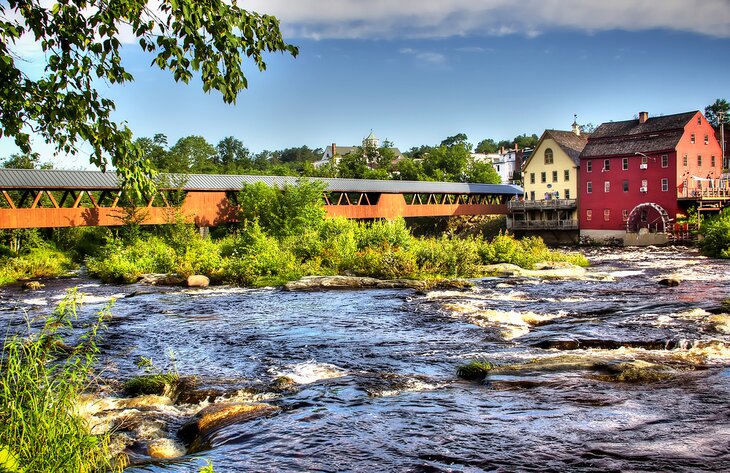
A winner of the Great American Main Street Award, Littleton has preserved one of New England's last classic Main Streets. Still an active commercial center for northern New Hampshire, and lined by independent shops, restaurants, and other locally owned businesses, Main Street is a lively place to stroll while you indulge in some shopping.
Step back into a mid-century world at Just L Modern Antiques and stop for lunch at the Littleton Diner, a Main Street institution since 1930.
At the Go Littleton Glad Shop, you can buy a cheerful "Be Glad" T-shirt and learn more about Pollyanna, the straw-hatted little girl that's featured in the bronze statue across the street on the library lawn. Beside the shop, a gate leads to a long staircase into the River District, bordering both sides of the Ammonoosuc River.
Alongside the river is the unique Harmony Park, where you're invited to create your own outdoor musical experience on one of the instruments. From here, you can cross a long covered bridge, with views of the falls that once powered Littleton's mills.
Back on Main Street, you'll find historic signs relating the stories of some of the stately brick mercantile buildings that give Littleton the air of a late 19th-century commercial center, and the restored Littleton Opera House, home of the Upstage Players.


